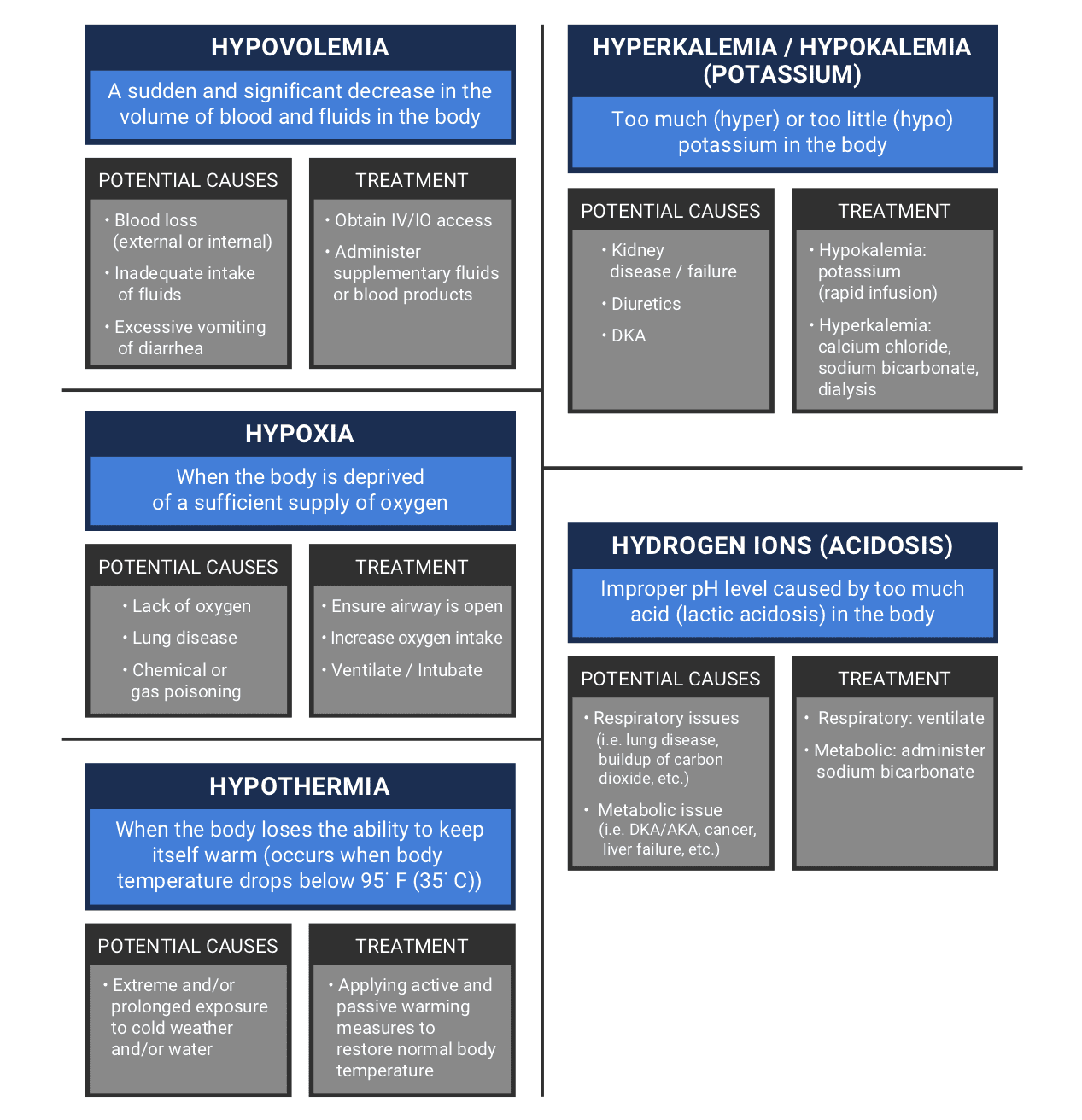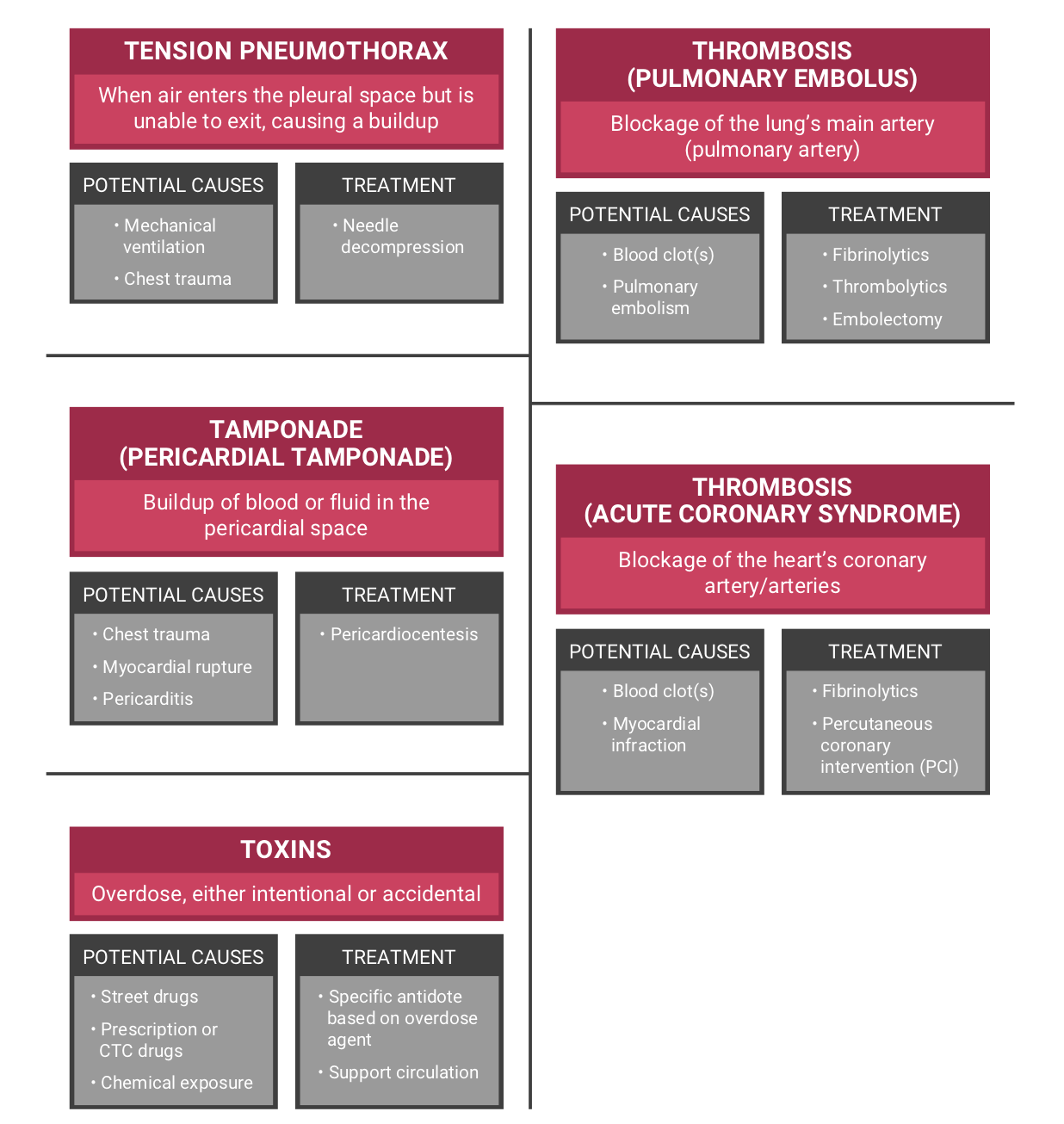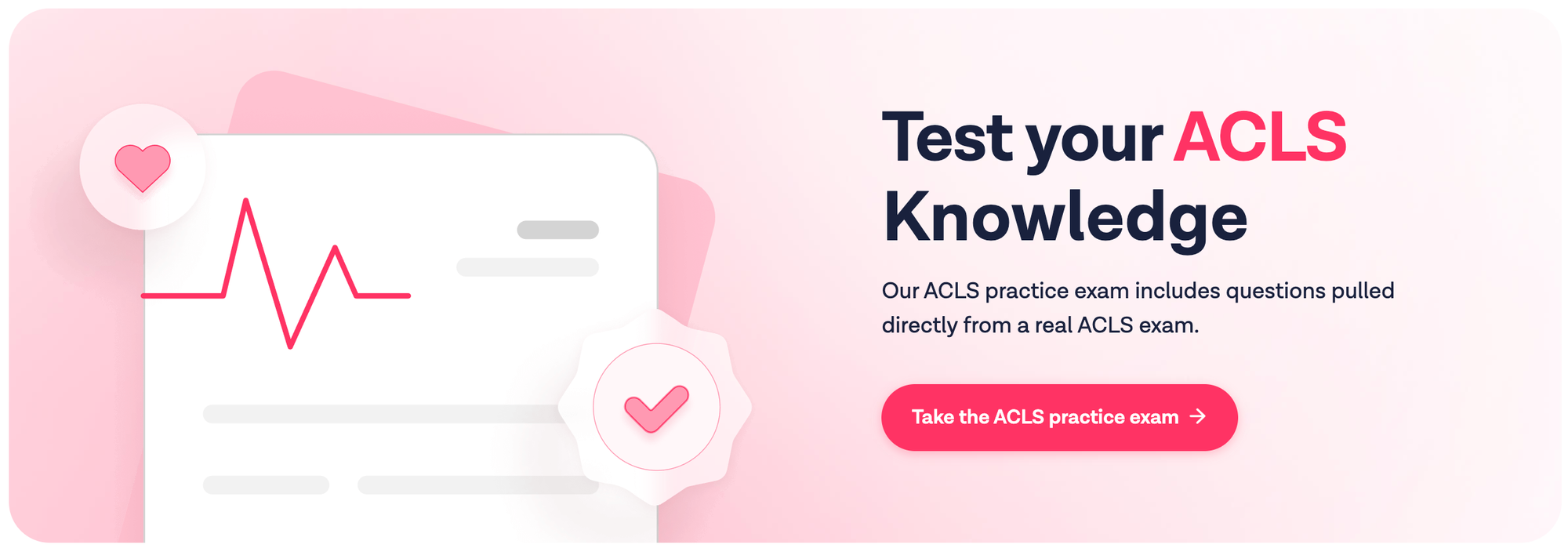The H’s and T’s Made Simple: Memorize in Minutes
Memorize the H's and T's in minutes, one of the most useful mnemonic devices in ACLS certification training for remembering the common causes of cardiac arrest.

One of the secrets to acing your ACLS certification exam is memorization.
To accomplish this, most students rely on mnemonic devices, which is a learning technique that helps the brain retain and retrieve information.
Two of the most common ones in ACLS certification training are the H’s and T’s, which enable students to remember the causes of cardiac arrest.
The ability to quickly identify what contributed to the arrhythmia enables a healthcare provider to follow the appropriate steps to treat the patient and provide the best chance at survival.
Whether you are just beginning your journey with ACLS training or could simply use a refresher, here’s everything you need to know about the H’s and T’s that cause cardiac arrest.
While H’s and T’s in ACLS are most frequently associated with what’s known as pulseless electrical activity (PEA), they can also contribute to ventricular fibrillation (VF), ventricular tachycardia (VT), and asystole.
Because there are multiple angles to approach things, it’s vital that the individual delivering care assess the patient’s medical history, evaluate their ECG, identify the H's and T's, and consider any situational or environmental factors at play.
This facilitates a more accurate diagnosis and subsequent treatment plan.
The H’s of ACLS

Hypovolemia
Hypovolemia is the loss of fluid volume in the circulatory system and a common cause of PEA (Pulseless Electrical Activity). Look for any blood loss in the patient with PEA. Blood could be a good indicator of Hypovolemia. After CPR, obtain intravenous access. A fluid challenge could also help determine if the cardiac arrest was caused by Hypovolemia.
Hypoxia
Hypoxia is the second item on the list of H's and T's. It’s a deficiency in the amount of oxygen that reaches the tissues - a contributing cause of cardiac arrest. Adequate ventilation and oxygenation are vital to reverse Hypoxia. Ensure the airway is open, check for proper rising and falling of the chest and for bilateral breath sounds, and make sure that the oxygen source is connected correctly.
Hydrogen Ions (Acidosis)
This condition on the list of H’s and T’s in ACLS is an abnormal pH in the body that results from lactic acidosis, which can happen from prolonged Hypoxia. Acidosis can be either respiratory or metabolic. To diagnose respiratory acidosis, perform an arterial blood gas evaluation (respiratory acidosis can be prevented by providing adequate ventilation). If the acidosis is metabolic, treatment with sodium bicarbonate is recommended.
Hyperkalemia / Hypokalemia (Potassium)
Hyperkalemia and hypokalemia on the list of H's and T's refer to too much (hyper) or too little (hypo) potassium in the body.
Hypothermia
Hypothermia is another one of the H’s and T’s that cause cardiac arrest. This condition is a low core body temperature defined clinically as 95 degrees Fahrenheit (35 degrees Celsius). Defibrillation, CPR, or any drug therapy may prove to be ineffective for a hypothermic patient. Hence, the primary objective would be to warm the body.
The T’s of ACLS

Tension Pneumothorax
The first T on the list of H’s and T’s is tension pneumothorax, which refers to air in the pleural space (around the lung) that has no way to escape, causing the collapse of the lung on the affected side. This reduces the return of blood flow to the heart and causes low blood pressure and hemodynamic collapse. This emergency can be treated with needle thoracotomy, which is performed by placing an 18-gauge needle in the second intercostal space in the midclavicular line.
Tamponade (Cardiac)
Tamponade is another one of the H’s and T’s in ACLS. In this condition, fluid or blood accumulates in the pericardium. The buildup puts pressure on the heart and prevents proper blood pumping, which can lead to cardiac arrest.
Toxins
Toxic ingestions or environmental exposure to toxic substances are among the most harmful H’s and T’s that can lead to cardiac arrest. These conditions can be diagnosed by specific groups of symptoms known as toxidromes. Recognition of a toxic cause of arrest can lead to appropriate treatment and a better outcome. In the case of uncommon toxin ingestion or exposure, poison control is a valuable and timely resource. While treating a victim of cardiac arrest that is caused by exposure to an environmental toxin, the rescuer must ensure the scene is safe before providing aid. Decontamination of the victim is critical.
Thrombosis (Pulmonary Embolus)
Thrombosis is another of the H’s and T’s causing cardiac arrest. It refers to the blockage of the lung’s main artery (pulmonary artery).
Thrombosis (Acute Coronary Syndrome)
Another one of the H’s and T’s related to the heart is acute coronary syndrome. This condition refers to the blockage of the heart’s coronary artery/arteries.
Conclusion
Studying and memorizing the causes and treatment methods for the above H’s and T’s will prepare you for your ACLS exam and serve you well throughout your medical career.
Like this content? Want more? Get future posts delivered straight to your inbox. Subscribe today and never miss another post!


